Abstract
Alteration of the specific infectivity of 3H-labeled ribonucleic acid and 14C-protein labeled poliovirus type 1 by adsorption on inorganic surfaces is investigated by application of kinetic theory to data obtained from sequential extractions of adsorbed virus. Some surfaces, e.g., SiO2, appear to have no significant effect. On the other hand, CuO substantially decreases the specific infectivity of adsorbed preparations. Differences in kinetic plots between 3H-labeled ribonucleic acid and 14C-labeled protein suggest that the inactivation observed involves physical disruption of virions. Van der Waals interactions between solid surfaces and virus are suspected to induce spontaneous virion disassembly. Surface catalyzed disassembly in aquatic and soil environments is implicated as an important mechanism controlling enterovirus dissemination. Methods developed here to evaluate complete recovery of adsorbed virus have potenital application to other degradation studied and problems concerning virus recovery from adsorbents used in virus concentrators.
Full text
PDF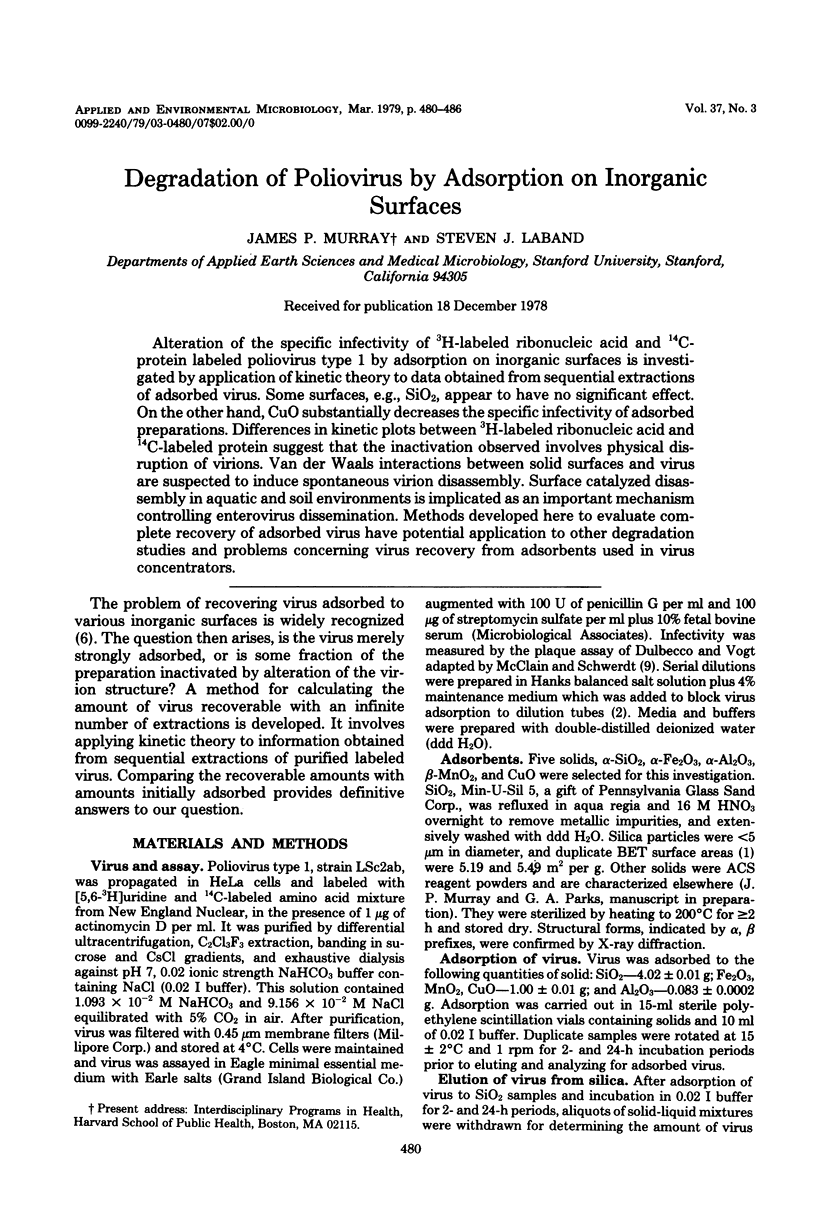
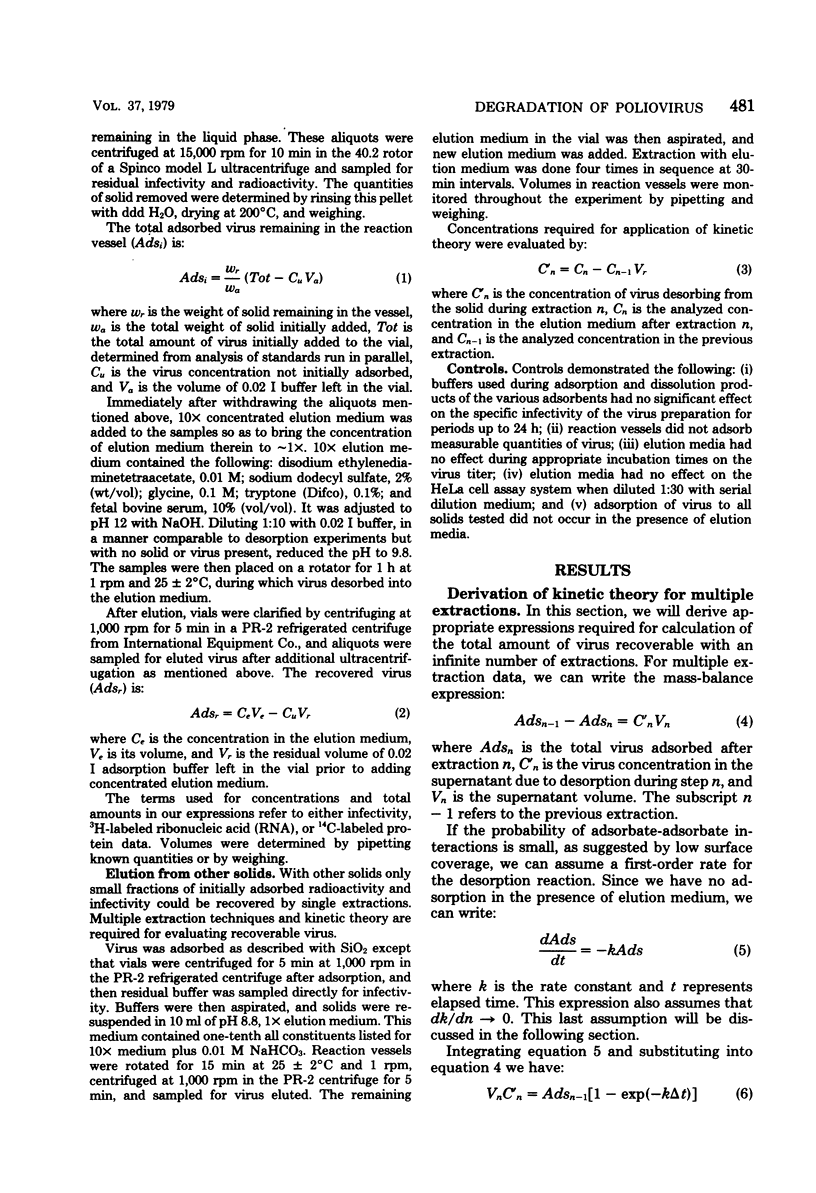
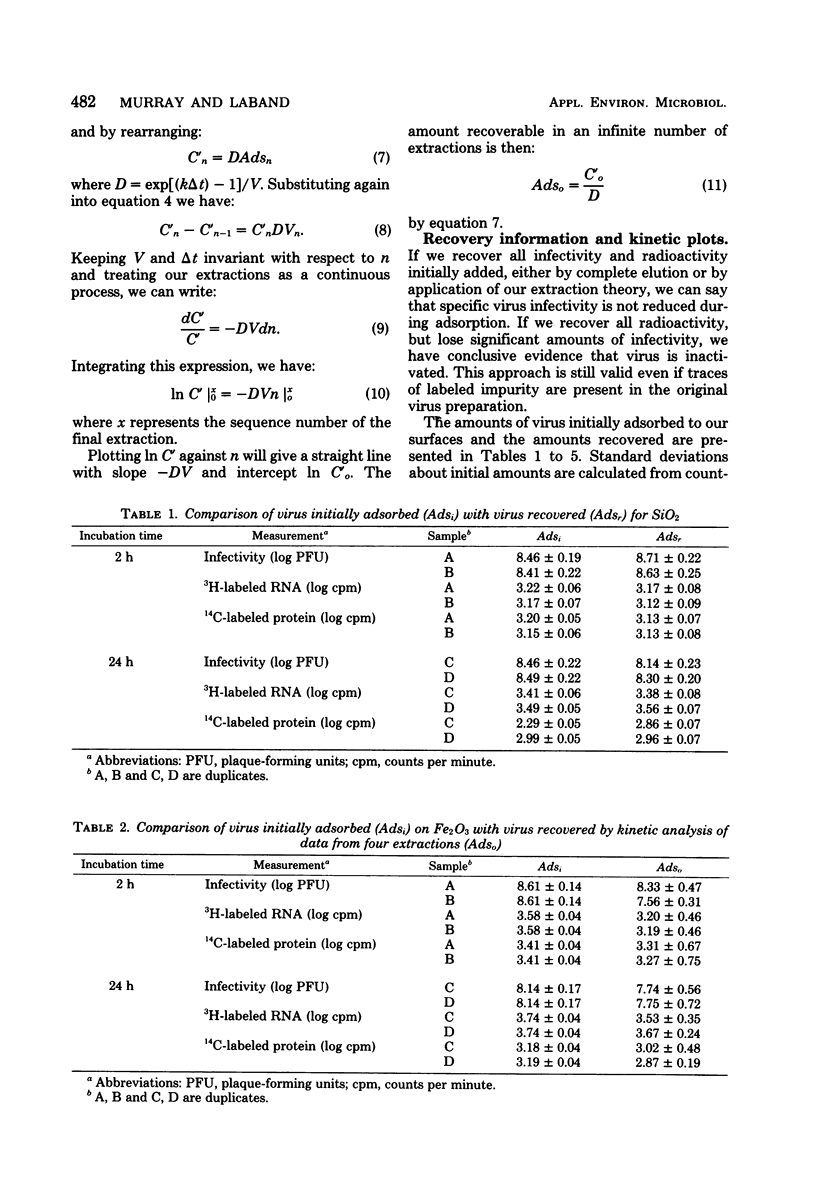
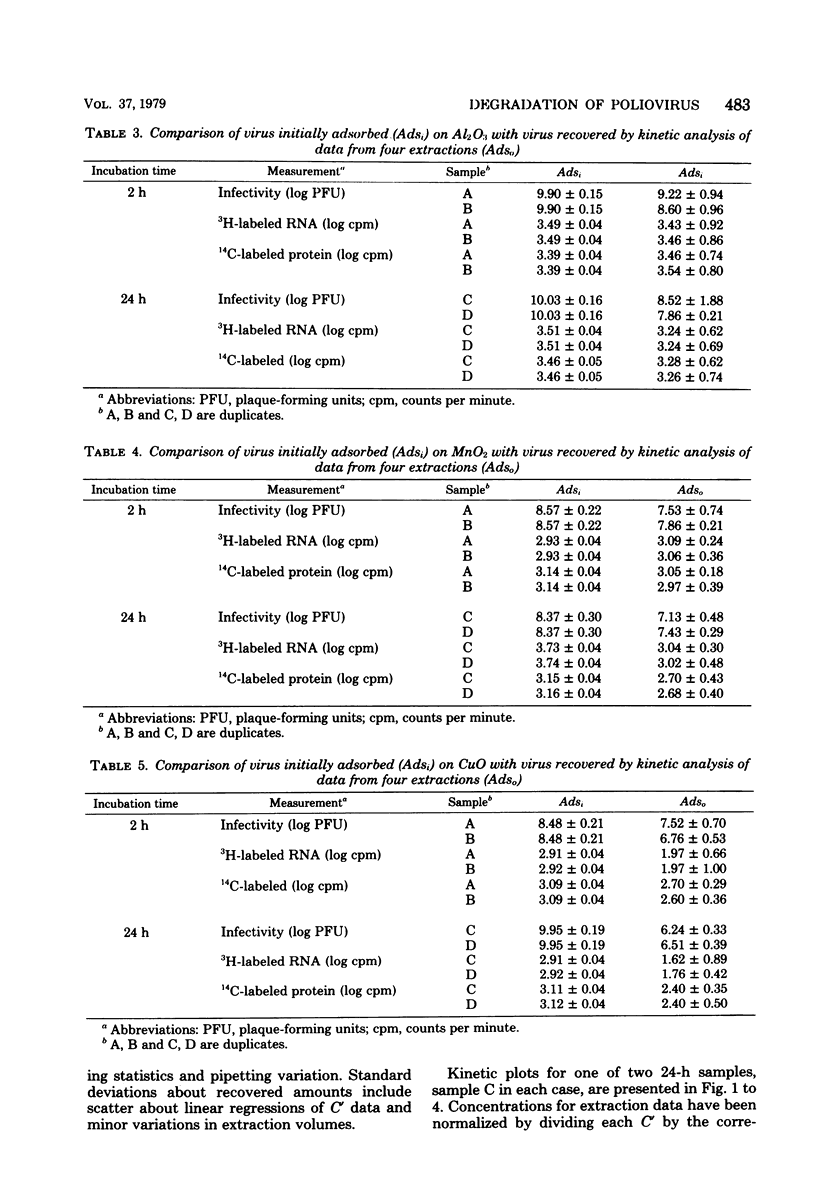
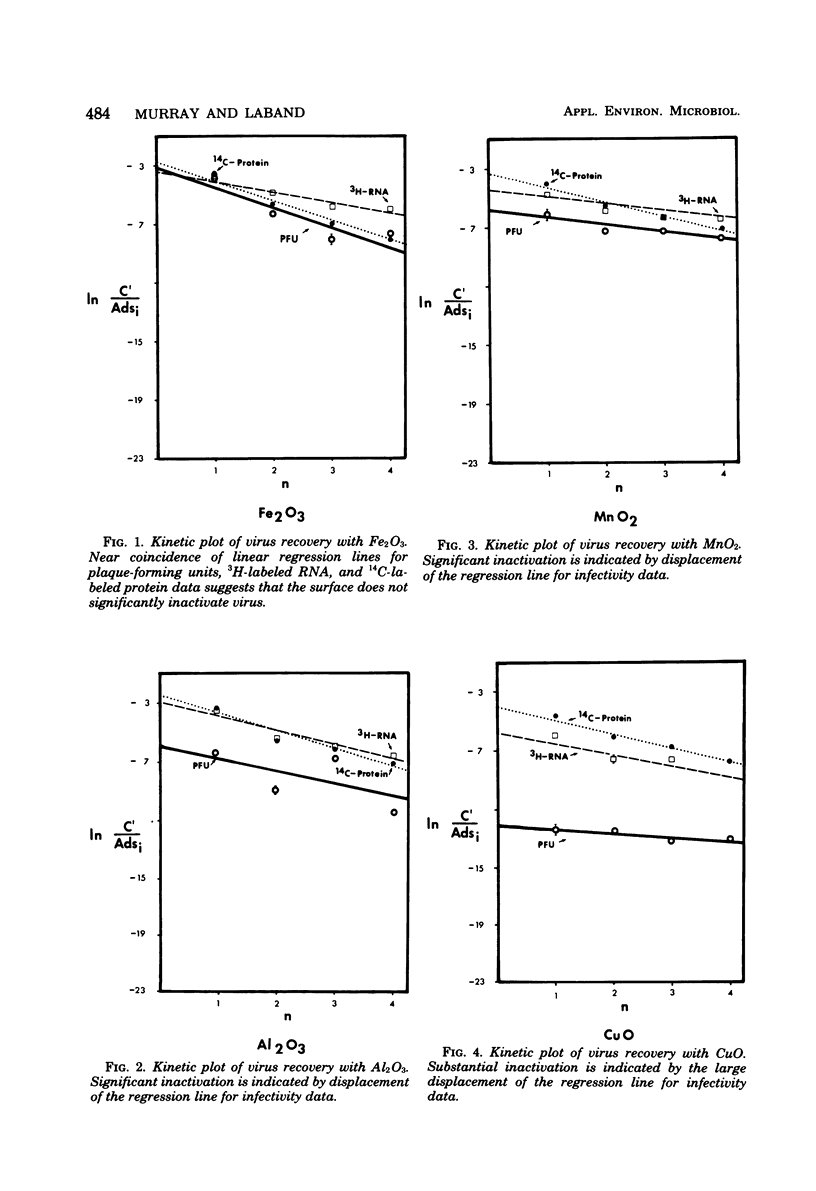
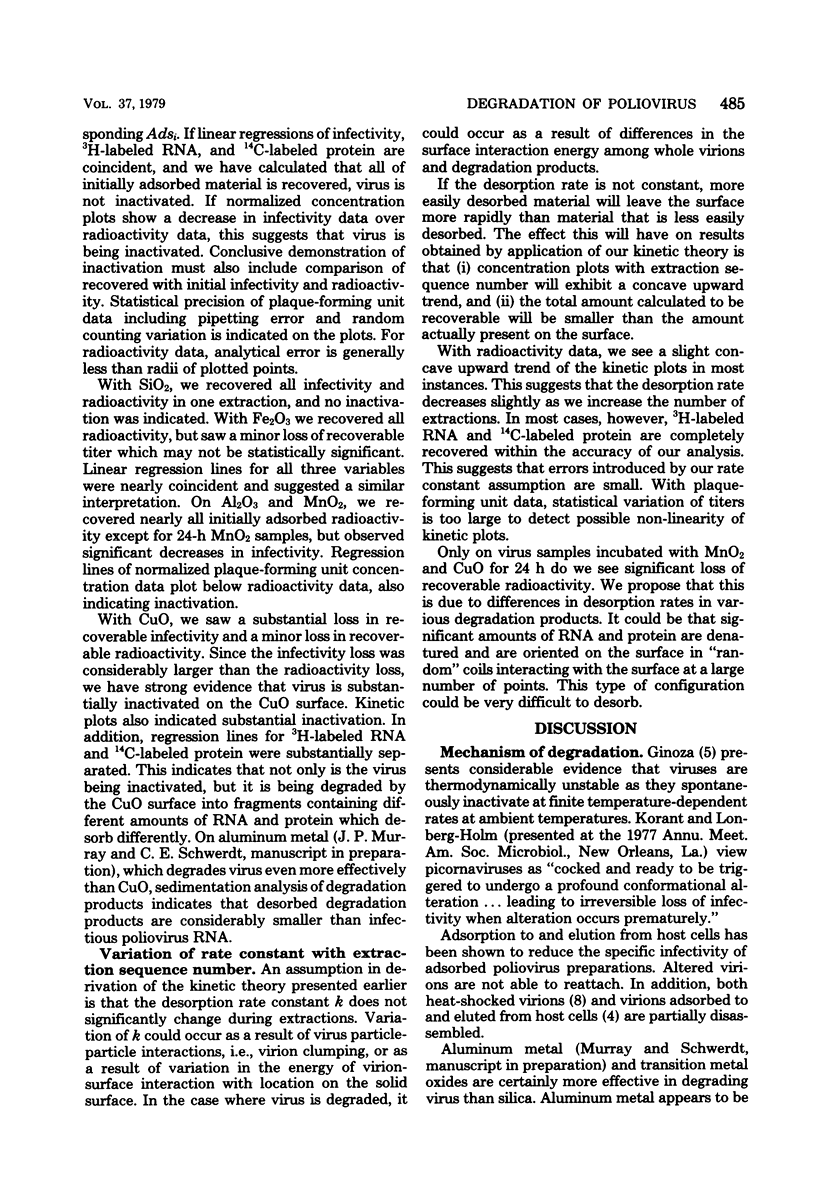
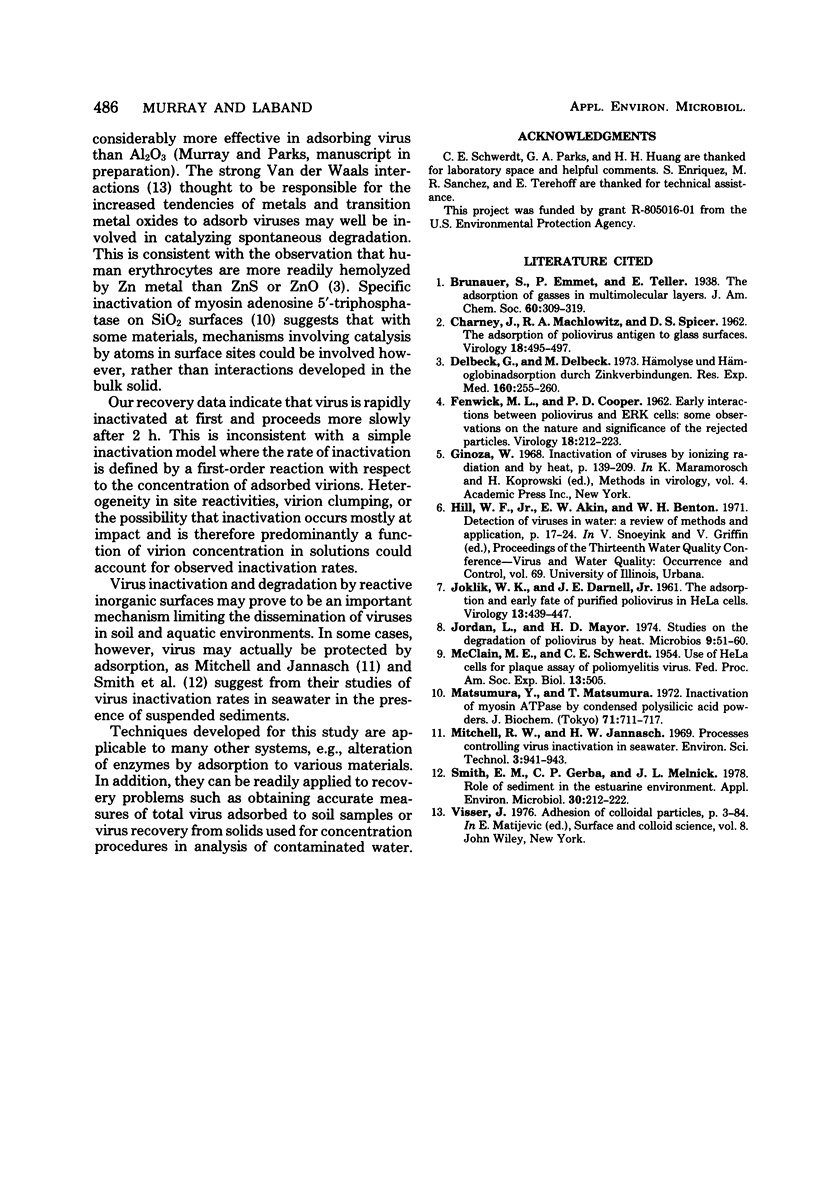
Selected References
These references are in PubMed. This may not be the complete list of references from this article.
- CHARNEY J., MACHLOWITZ R. A., SPICER D. S. The adsorption of poliovirus antigen to glass surfaces. Virology. 1962 Nov;18:495–497. doi: 10.1016/0042-6822(62)90043-0. [DOI] [PubMed] [Google Scholar]
- Delbeck G., Delbeck M. Hämolyse und Hämoglobinadsorption durch Zinkverbindungen. Res Exp Med (Berl) 1973 Jun 19;160(4):255–260. doi: 10.1007/BF01851466. [DOI] [PubMed] [Google Scholar]
- FENWICK M. L., COOPER P. D. Early interactions between poliovirus and ERK cells: some observations on the nature and significance of the rejected particles. Virology. 1962 Oct;18:212–223. doi: 10.1016/0042-6822(62)90007-7. [DOI] [PubMed] [Google Scholar]
- JOKLIK W. K., DARNELL J. E., Jr The adsorption and early fate of purified poliovirus in HeLa cells. Virology. 1961 Apr;13:439–447. doi: 10.1016/0042-6822(61)90275-6. [DOI] [PubMed] [Google Scholar]
- Jordan L., Mayor H. D. Studies on the degradation of poliovirus by heat. Microbios. 1974 Jan;9(33):51–60. [PubMed] [Google Scholar]
- Matsumura Y., Matsumura T. Inactivation of myosin ATPase by condensed polysilicic acid powders. J Biochem. 1972 Apr;71(4):711–717. [PubMed] [Google Scholar]


